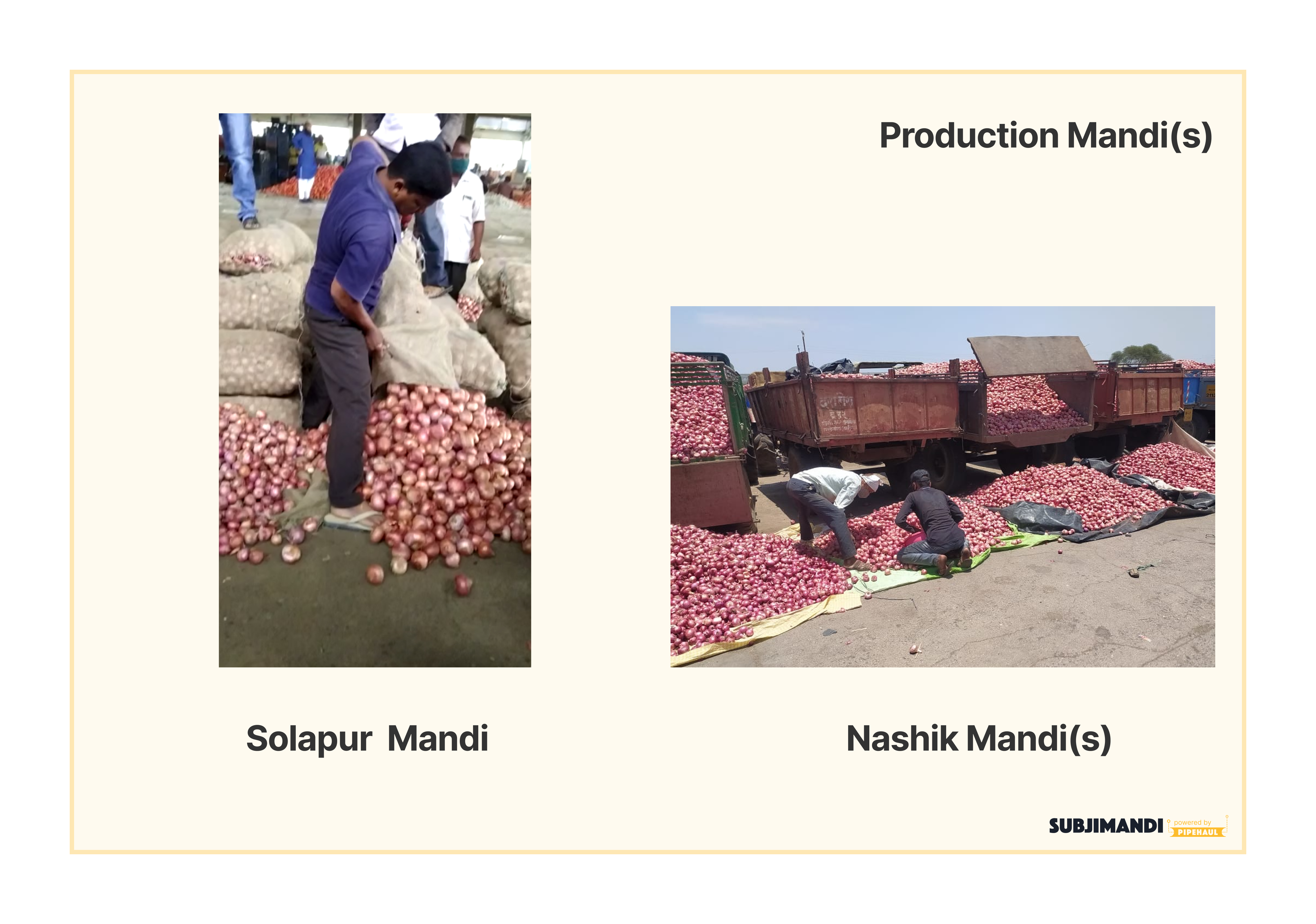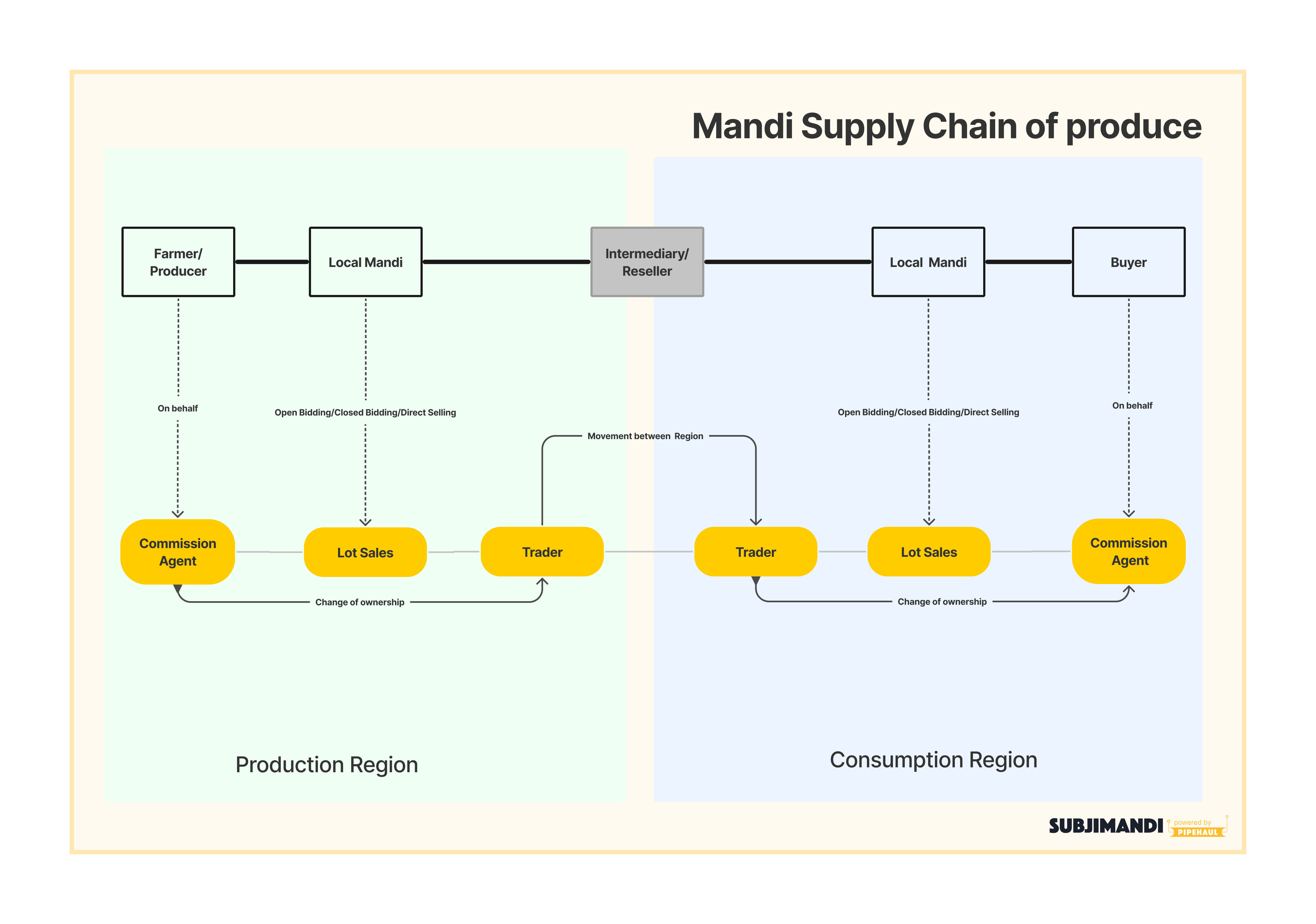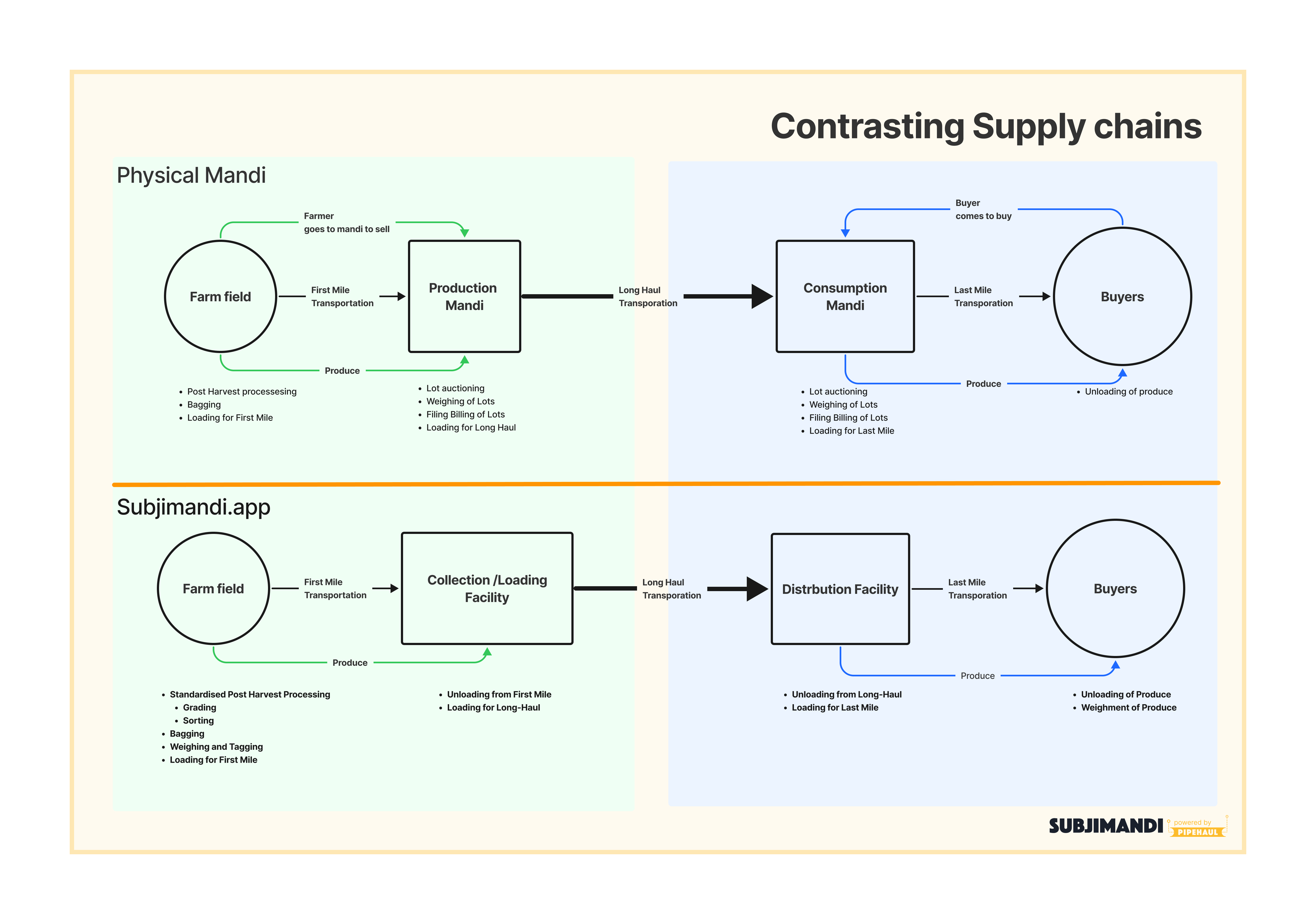Why we are building a new Mandi?
Written by

Vivek V.S
We are building a marketplace in produce commodities. Produce comprises of vegetables and fruits that you eat on a daily basis. In this post, we will lay out one reason why a new mandi like subjimandi.app is being built.
Background
Mandi(s) operated by the market committee were a manifestation of phsycial spaces required to conduct trade between farmers and buyers. They are huge facilities that comprise multiple stakeholders like traders, labour gangs, transporters and officials in addition to farmers and buyers.
The mandi(s) charges fees in the form of commission or fixed fee for trade taking place in their vicinity.
Let us illustrate this with an example of onion. The mandi(s) of onion trade change between regions. The mandi(s) of Solapur, MH and Nashik, MH both operate in onion predominantly. Yet, in Solapur mandi, the onions are traded in bags and in Nashik mandi, they are sold openly on tractor wagons. Point to keep in mind is that both produce Onion crop throughout the year. The other nuances are not beyond the scope of this post.

This happens because the mandi(s) serve different set of buyers. In Solapur mandi, the buyers are mostly other traders that sell in a different consumption regions. The likes of Banglore, Hyderabad and Chennai. Whereas buyers from all other regions including exporters to outside country come to Nashik mandi(s).
⚠️: Agri-space consists of multitudes. It has various angles, approaches and stakeholders involved. This space is subject to market, perception and political risk. This post is our own opinion from experience. Please take any writting from us for infotainment purposes only. This is not advice on how to solve problems, please consider doing your own research.
Fault Lines
The design of a mandi(s) is optimised for the local conditions of the trade. In order to ensure trade is robust and fair, each mandi(s) devices its own set of rules. This also creates the need for intermediaries to crop up in order to connect the trade between mandi(s) that serve different regions.
Let us assume the case of Hyderabad. If we are to go buy some onions from the local mandi. We are getting the produce from either of the two mandi(s). In order to bring the produce to Hyderabad, you need to have an trader buying produce over in Nashik or Solapur and selling their produce in consumption region’s mandi.
The intermediary has to buy enough Onion to make the logistics feasible for moving it between the Hyderabad and Nashik/Solapur. Moving just the produce you need from the origin mandi(s) is unaffordable and improbable in the current scenario.
The intermediary has to be adept at how trade takes place in both these mandi(s) and have local representative to overlook the physical aspect of trade.
We are not going into the nitty gritties of how the trade takes place in these mandi(s). Instead, we are just higlighting the structure deviced for trade to take place.
Problem is in design
The inter mandi design is strucutred in a manner where the ownership of produce changes couple of times. This design also creates a number of logisitical costs that are undertaken for ensuring the trade is fair in each of these mandi(s).
-
Farmer in local mandi to Trader who will resell in other mandi(s).
-
Trader in mandi to Buyer in other local mandi.

This design suffices the physical trade only world where the discovery of produce and transaction of produce both happen at the same place.
But in the current world, there is a possbility of seperating these two. Making the discovery of produce at source/farm is more ideal to find the actual buyer. This reduces the change of ownership and reduces the logisitical costs as well.
Some might say, why can't you list the prices digitally and let buyers buy directly.
The current mandi(s) system doesn't incentivise its stakeholders to serve any other stakeholder who is phsyically not present. The produce being sold is not standardised to signal to the buyer about its traits. Like type, colour, shape and size.
Let us assume a thought experiment, think of a marketplace which allows you to buy mobile phones from brand but doesn't ensure you get the same phone you wanted to buy. In order to get the phone you need, you send some one who works for you to see and buy the mobile phone of your needs. Mobile phones are still a stretch because the manufacturing of them is standardised. But we are talking about produce, where the production is not standardised and needs work in post harvest to make them standardised.
Our approach
We at Subjimandi.app are building a digital first produce marketplace. We are creating a marketplace that unbundles the cost of transaction from the cost of produce at source.
We are able to achieve this feat by classifying the produce at source. This is called grading.
Visiting the same thought experiment of mobile phone. If we were selling mobile phone, we could tell you all the aspects of how the phone looks and feels. Screen size, texture of body, buttons on the device, colour, charging port type or if it has a headphone jack or not.
We process the onion in the field/nearest facility of the producer to declare the price of graded produce to the buyers at consumption region.
Manage the logistics of the produce to reach the buyer once they buy the produce at source itself.
We assure buyers in consumption region of bagged/packed produce maintaining consistent grade standards.
We are designing a marketplace that has produce at its core. For the trade to take place across regions, the produce being traded needs to have standards for both the farmers and buyers.
We will leave you with a process flow of produce that takes place when moved through a physical mandi network and when moved through subjimandi.app

The design we are striving to create in produce marketplace is where price of graded produce is uniform. Yet, the cost to get the produce may alter according to your quantity and location.
For price(byte) to traverse to prospective buyers we need to first commodify the produce(atoms). At subjimandi.app we are looking to normalise prices of produce across regions.
